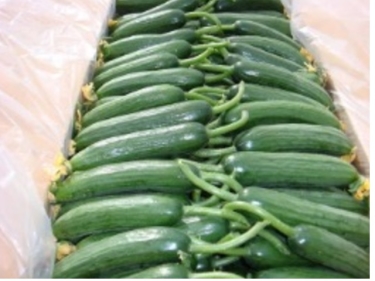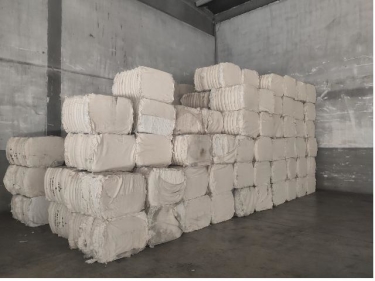Search Results for "saint kitts and nevis" in "Saint Kitts and Nevis" on Export Portal
Active Filters
-
Keywords:
-
Country:
- Clear all
New Search
Couldn't find the product you want?
Fill out this form to request the product.
Exports

Saint Kitts and Nevis is a twin-island federation whose economy is characterized by its dominant tourism, agriculture and light manufacturing industries.
Former sugar plantations (closed in 2004) dominate the St. Kitts landscape. Many of the cane fields are being burned to make room for land development, especially on the northern side of the island, in the parishes of Saint John Capisterre and Christchurch. The agricultural, tourism, export-oriented manufacturing, and offshore-banking sectors are being developed and are now taking larger roles in the Saint Kitts' economy. The growth of the tourism sector has become the main foreign exchange earner for Saint Kitts and Nevis. The country has also developed a successful apparel assembly industry and one of the largest electronics assembly industries in the Caribbean.
St. Kitts is dependent upon tourism to drive its economy. As tourism grows, the demand for vacation property increases in conjunction. In hopes of expanding tourism, St. Kitts hosts its annual St. Kitts Music Festival.
Of the islands' total land area, about 39% is devoted to crops. The principal agricultural product of St. Kitts is sugarcane; peanuts are now the second crop. On Nevis, sea island cotton and coconuts are the major commodities. Sweet potatoes, onions, tomatoes, cabbages, carrots, and breadfruit are grown for local consumption on both islands, mostly by individual smallholders. Some exports of fish (primarily lobsters) are made to the Netherlands Antilles and Puerto Rico; fisheries exports totaled US$245,000 in 2000. Fish is caught by traditional methods such as beach-seining, pot and trap fishing & hand-lining. But large quantities of dried, salted and smoked fish, as well as frozen are imported from Canada and USA.
Main exports of Saint Kitts and Nevis are broadcasting equipment, electric motor parts, scrap vessels, non-fillet frozen fish, beer, other engines, flavored water, other measuring instruments, low-voltage protection equipment, passenger and cargo ships.
Main export partners of Saint Kitts and Nevis are United States, Germany, Canada, Turkey, Ghana, Antigua and Barbuda, Dominica, Albania.
Customs requirements of Saint Kitts and Nevis
Saint Kitts and Nevis Customs Contacts:
Website: http://www.skncustoms.com/Index.aspx
E-mail: skbcusexcise@sisterisles.kn , officecomptroller@skncustoms.com
Address: Customs and Excise Department, P.O. Box 1, Bird Rock, Basseterre, St. Kitts
Telephone: (869) 466-7227, (869) 466-7228
Fax: (869) 465-8519
Saint Kitts and Nevis is a two-island country situated in the West Indies. It is the smallest sovereign state in the Americas, in both area and population. The country's nearest neighbours are the islands of Sint Eustatius, Saba, Saint Barthélemy, Saint-Martin, Anguilla, Antigua and Barbuda. Saint Kitts and Nevis is a member of the Commonwealth of Nations, World Bank, International Monetary Fund, Organization of American States, Organization of Eastern Caribbean States and the Caribbean Community and Common Market (CARICOM).
Importing
Entry (Declaration) Processing:
- A Customs entry or declaration is required for all consignments imported into St. Kitts/Nevis.
- Customs entries can be submitted electronically but in addition at least three hard copies
of the entry forms (C100) must be presented with the relevant invoices, air waybill /bill of
lading and other supporting documents attached.
- An importer may also be required to submit an Importer’s Declaration Form if the invoice is
unsigned or deemed insufficient by Customs.
- A Bill of Sight may also be used in instances where invoices are unavailable and the
Comptroller permits the goods to be inspected and valued for duty purposes.
- The hard copies of the customs entries must be taken to the Supply Office for processing
and approval before being lodged at Customs. The entries are stamped as evidence of
compliance.
- At the time of first presentation of the entry to Customs the importer or authorised
Customs broker must sign the Lodgement Register.
- The verification of the Customs entry involves comparing the electronic declaration with
the paper declaration to ensure that the items are properly classified, the value for duty
purposes is correct, the relevant duties and taxes are accurately computed and that all
other regulatory requirements are complied with.
- Any discrepancies observed during the verification process are queried and the entry
returned to the importer or broker for correction. The queried entry is accompanied by a
Query Form which explains the discrepancy to the importer.
- After adjusting the Customs entry the importer or broker returns the corrected document
to the Long Room and makes a notation on the Query Form to indicate the action taken to
adjust the entry.
- The entry is finalised by Customs and an Assessment Notice is generated with the details of
the Customs duty to be paid.
Commercial imports
- In the case of commercial goods the importer is required to present a proper Customs
entry (declaration) in respect of the goods.
- The declaration is verified by Customs and then the importer must pay the Customs duty
due on the goods.
- The contents of the parcels may also be inspected by Customs prior to being released.
- The importer or broker required to sign a “Receipt for the Released Goods Form” which is
retained by Customs.
Export Procedures
Preparing documents:
- An exporter will determine the carrier to be used for shipping goods to destination.
- An export declaration must be prepared with particulars of the goods and supporting
documentation.
- The air waybill /bill of lading must be prepared by the agent prior to departure of the
aircraft/vessel.
Declaration Processing
- The export declaration (entry) is presented electronically or physically taken to the Customs
office where the goods are to be exported for processing.
- The declaration is verified and finalised.
- The finalised document must then be taken to the Customs Cashier for “Stamping Out”.
- Any Port charges are paid to the Port Cashier who issues a receipt.
- The documentation is taken to the Warehousing Officer for record keeping and filing.
Source:
http://www.skncustoms.com/pdfs/SKB%20Import%20Procedures%20%20Final.pdf





























